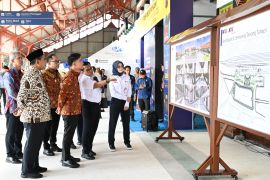Meanwhile, at a commercial space facility, engineers use 3D printing technology to produce rocket components.
Over two thousand kilometers away in south China’s Guangdong province, underwater robots perform equipment maintenance and emergency tasks, while drones achieve 24-hour flights under stable power conditions.
These scenes reflect China’s accelerated integration of scientific and technological innovations with industrial development, marking significant strides toward high-quality growth.
From January to May 2025, China received nearly 5 million valid invention patent applications, up 12.8 percent year on year. Revenue for major emerging service enterprises rose by almost 10 percent, while the value-added output of major high-tech manufacturers climbed 9.5 percent in the first half.
What’s driving this impressive momentum, and what lies ahead?
These questions were explored in the latest episode of China Economic Roundtable, an all-media talk show hosted by Xinhua News Agency, featuring government officials, innovation leaders, and tech entrepreneurs.
Innovation integration
Liu Qing, director of the National Innovation Center par Excellence (NICE), a Chinese institution focused on commercializing scientific achievements, described 2025 as exceptionally busy.
In recent months, NICE has hosted forums in Denmark and Australia and added 11 new overseas strategic partners, bringing the total to nearly 100.
“The market prospects for industrial development in China are very attractive to overseas scientists,” Liu said during the roundtable.
Qin Haoyuan, an official with the Ministry of Science and Technology, added that China’s influence as a global innovation hub is expanding, with the country shifting from being a participant and contributor to a pioneer and leader.
Significant breakthroughs in quantum technology, life sciences, and artificial intelligence have helped propel this rise.
China now ranks second globally in total research and development (R&D) investment. Enterprises are key drivers, accounting for over 75 percent of national R&D spending and staffing.
Gao Qianfeng, co-founder and vice president of Beijing-based space firm GalaxySpace, attributed the successful commercialization of scientific breakthroughs to China’s robust industrial ecosystem.
His firm’s supply chain includes over one thousand partners - enterprises, universities, and research institutions. He said that such open collaboration creates catalytic chemistry between labs and factories.
Policy-backed ecosystem
Behind this innovation surge is a supportive policy environment created by the Chinese government to enable the translation of patents into products.
In May, China released fresh guidelines to accelerate high-quality growth in the science and technology services sector.
The plan targets areas including R&D, tech transfer, business incubation, and promotional services.
“The sci-tech service industry is vital for advancing deep tech-industrial integration and developing new quality productive forces,” Gan Xiaobin, an official from the Ministry of Industry and Information Technology, said.
He outlined efforts to build innovation platforms, boost major programs, strengthen market players, set industry standards, and provide support via talent and finance initiatives.
Established in 2021, NICE has emerged as a hub for leading firms tackling challenges in environmental protection and digital transformation.
“Over 500 companies are now working with us. Most importantly, we’ve built a team of tech managers who understand enterprise needs,” Liu said.
The Ministry of Science and Technology has also advanced reforms - granting researchers ownership of their scientific achievements and piloting new evaluation mechanisms tailored to different research outcomes.
Qin said that the ministry supports enterprise-led research on major national projects, aided by tax incentives to increase R&D investment.
Leading firms are being encouraged to form innovation consortia with universities, SMEs, and research institutions.
Officials from both ministries have pledged to further empower enterprises as the core of China’s innovation drive, enhancing synergy between scientific discovery and industrial application.
Gan noted that going forward, more enterprise experts would be involved in national project design, policy development, and evaluation processes.
Qin added that China aims to build a financial system aligned with sci-tech innovation, refine its national innovation policy, and create a globally competitive environment for open innovation.
“Sci-tech innovation is the source of vitality, while industrial innovation is the bridge of transformation,” Gan added. “Their deep integration is the key to building new productive forces and advancing industrial modernization.”
Translator: M Razi Rahman
Editor: Primayanti
Copyright © ANTARA 2025












